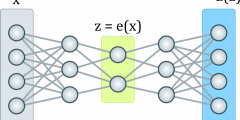Making Science Public in a chaotic world
July 25, 2025
As you know, I am now gradually moving from my old ‘Making Science Public’ blog home at the University of Nottingham to my new personal blog home here. This wasn’t easy and lots of people supported me directly or indirectly in this move (by listening to my whining). You know who you are, and I …
Space, hype and science communication
April 25, 2025
I recently wrote a post with Kate Roach about some hyped-up claims regarding de-extinct dire wolves. In the middle of writing about this, another claim came along, and, again, I thought “hmmm, is that really true or is it hype?”. This time it was not about de-extinct life but about extraterrestrial life. At the same …
Making mineralogy public: George Sand and Jules Verne
January 31, 2025
On 14 January, Richard Fallon, an expert on 19th/20th-century literature and science, posted on Bluesky: “More people ought to read George Sand’s 1864 romance Laura, Voyage dans le cristal: a delirious, phantasmagoric, mineralogical story that includes a trip to a prehistoric lost world at the North Pole”. I had read some stories by George Sand …
Responsible AI to the max: Meet Goody-2
February 10, 2024
This is not a real blog post. I just needed to mark the advent of a thought-provoking and funny, yes funny, AI, namely Goody-2 (and my brain always adds ‘shoes’….). Finding Goody-2 A couple of days ago, I saw this tweet by Melanie Mitchell, a complexity scientist and expert on AI, which made me curious. …
Science and trust – the sequel
November 10, 2023
In 2018 a new ‘International Science Council’ (ICS) was established and I wrote a blog post in which I critically dissected the announcement of this launch. I tried to show that this announcement seemed to perpetuate a series of misconceptions relating to science and trust. At the end of October 2023, the ISC Centre for …










